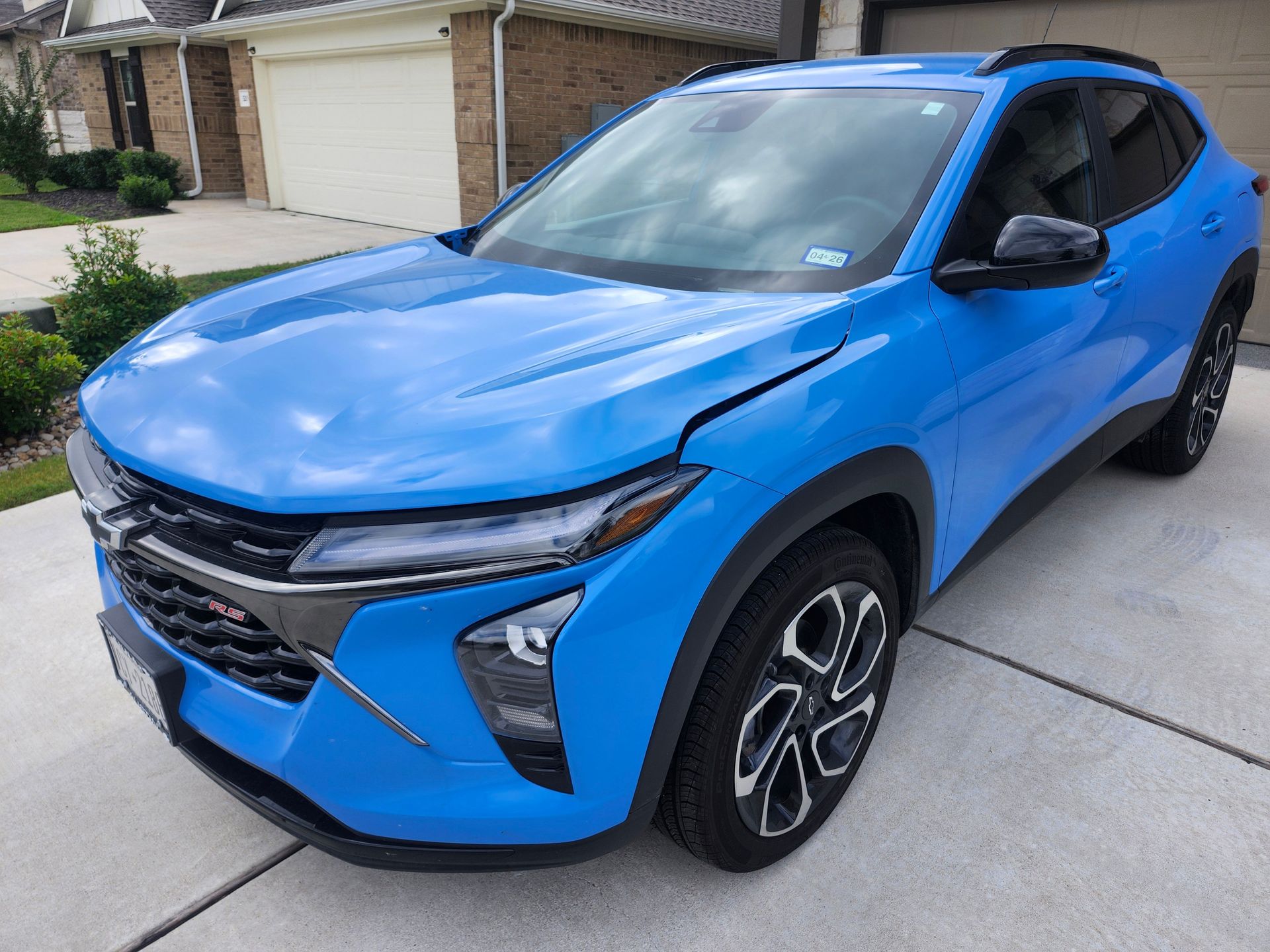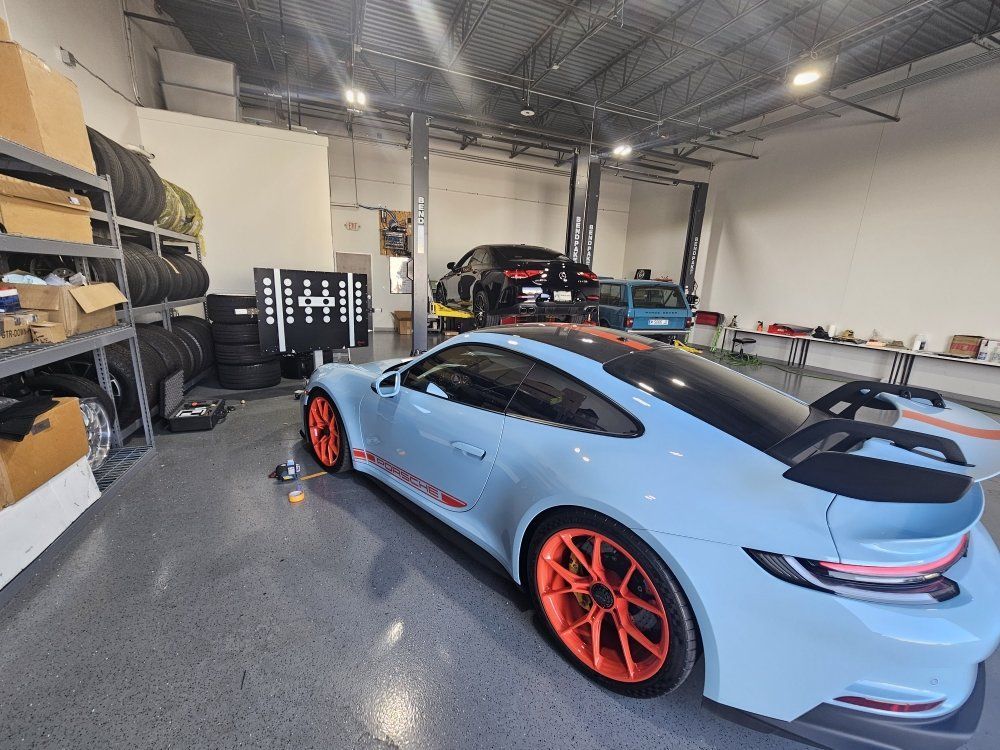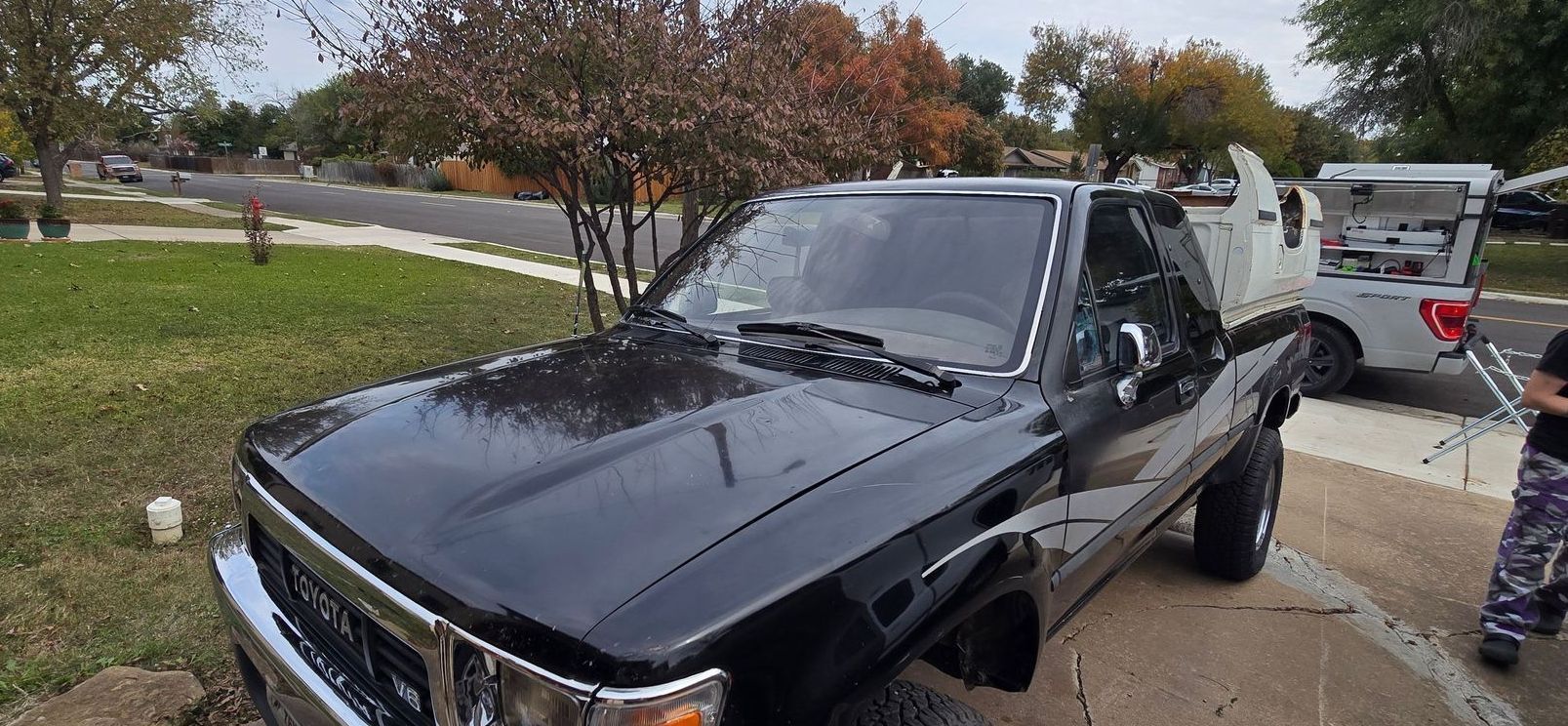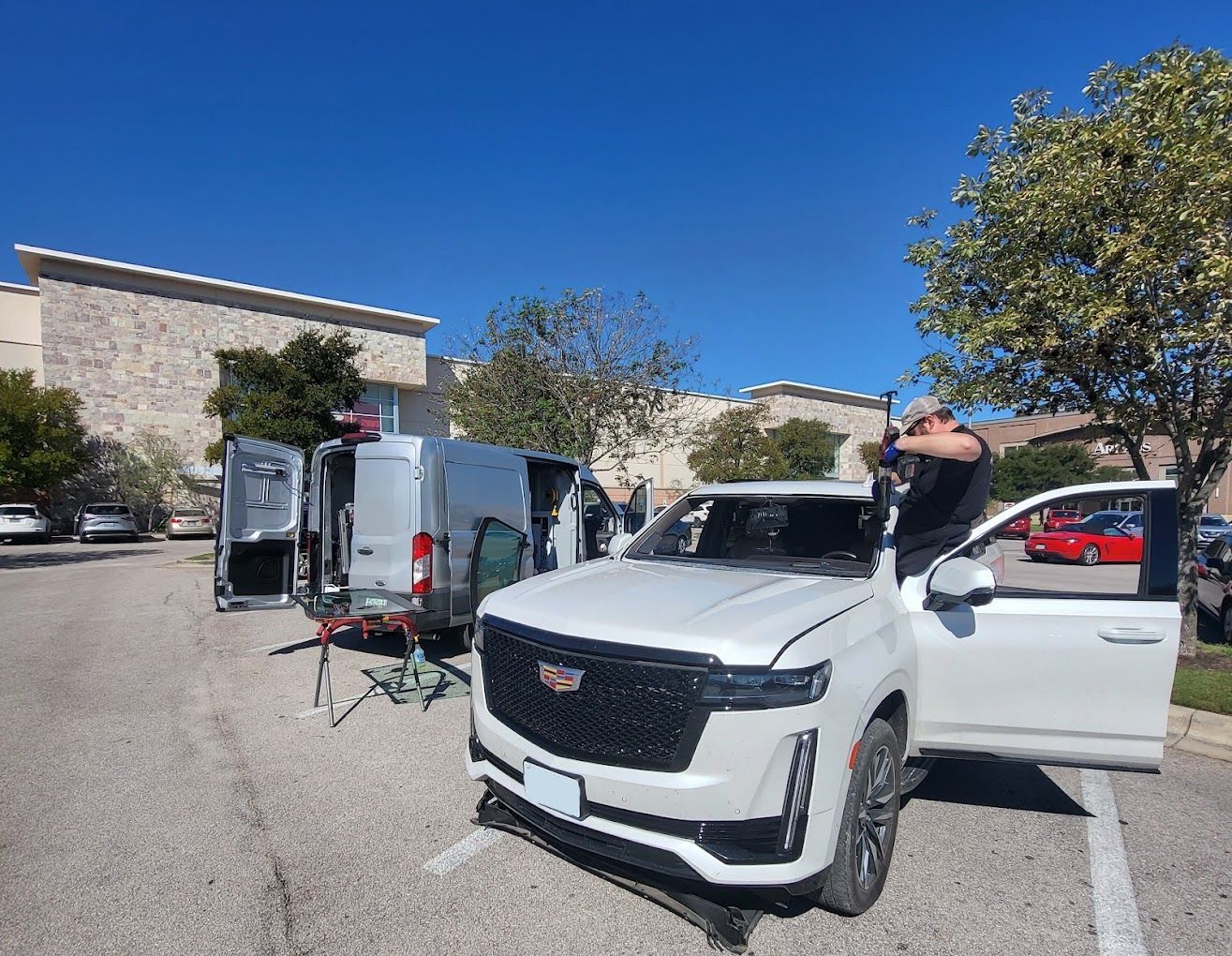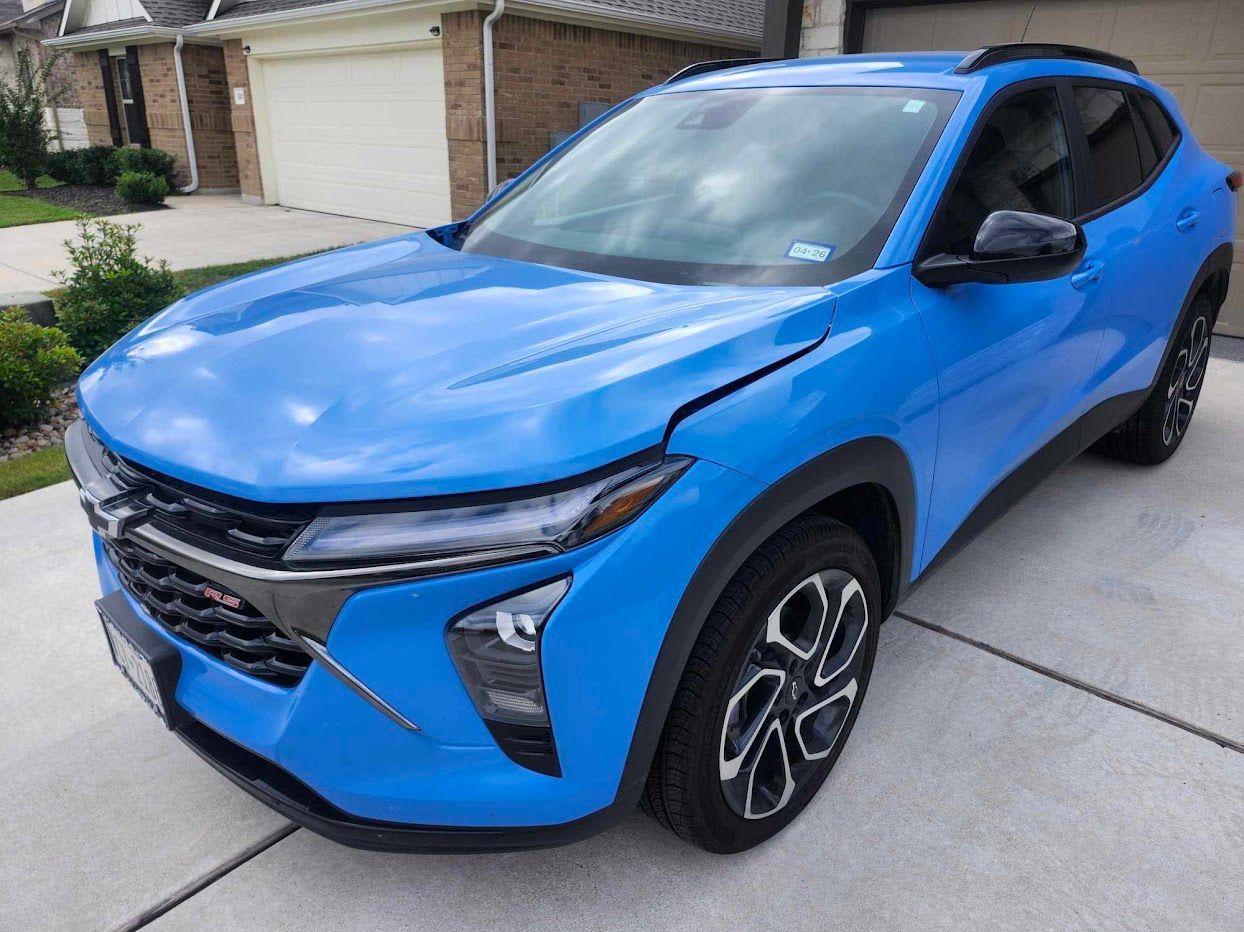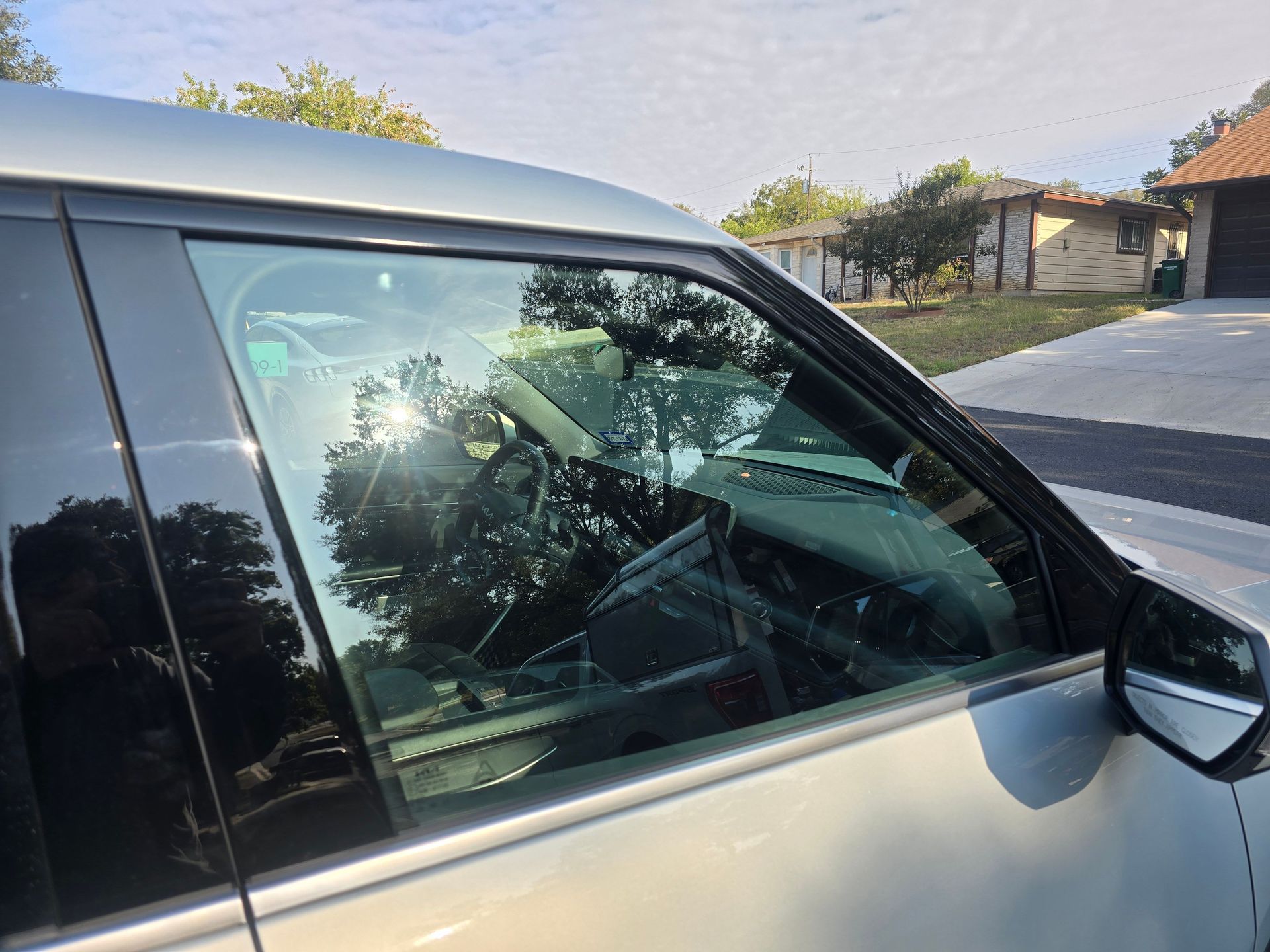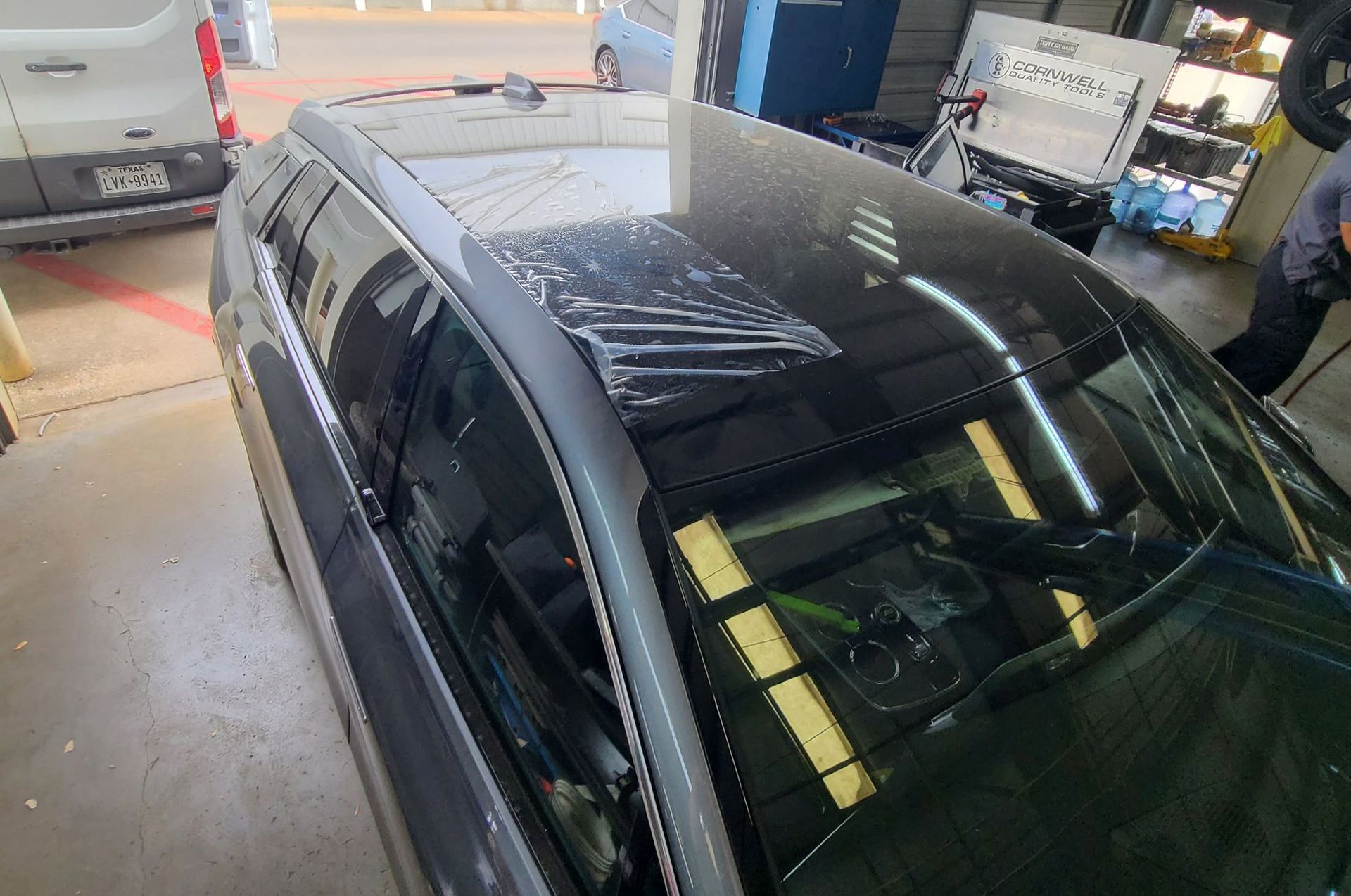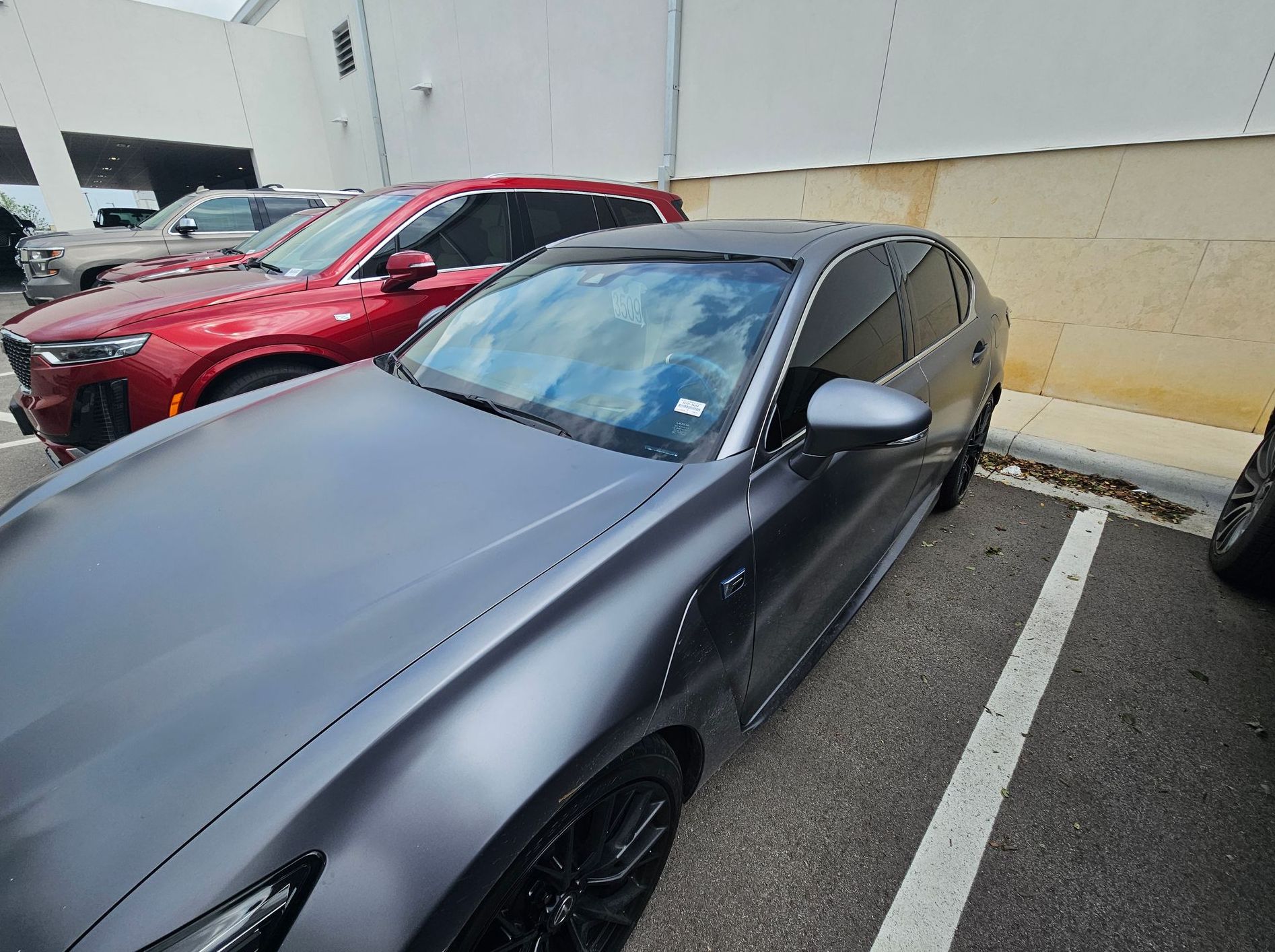How Weather Affects Auto Glass
Seasonal Weather and Auto Glass Damage
Your vehicle’s auto glass, especially the windshield, plays a crucial role in ensuring safety, visibility, and maintaining the vehicle's structural integrity. However, various weather conditions can significantly impact the condition and longevity of your windshield. From the scorching Texas summer to harsh winter freezes, weather changes pose unique challenges that drivers need to understand to properly maintain their auto glass.
The Impact of Seasonal Changes on Auto Glass
Seasons bring dynamic weather conditions that can weaken or damage auto glass over time. Understanding these effects helps you take preventive measures and recognize when repairs are necessary.
Summer: Texas Heat and Sun Damage
In Texas, summer temperatures often soar past 100°F (38°C), exposing windshield glass to intense heat and aggressive UV rays. The consequences include:
- Thermal Stress: Rapid heating causes the glass to expand and contract unevenly, leading to microcracks or stress fractures.
- UV Degradation: Ultraviolet rays weaken the adhesive seals around the windshield, increasing the risk of leaks or windshield separation.
- Debris Impact: Hot, dry conditions cause dirt and small debris to accumulate, which, when hitting the windshield at high speeds, can cause chips or cracks.
Winter: Freezing Temperatures and Frost
Frozen winters introduce a different set of challenges:
- Ice and Snow Accumulation: Heavy snow or ice adds weight, and attempting to remove ice forcefully can cause cracks or chips.
- Frost Formation: Rapid freeze-thaw cycles lead to stress on the glass as ice expands within small cracks.
- De-icing Chemicals: Salt and chemical melts can corrode the windshield sealant and frame, causing weakening over time.
Autumn and Spring: Transitional Seasons
These seasons involve variable weather patterns:
- Rain and Moisture: Water infiltration can weaken the bonding adhesive if it seeps into micro-cracks.
- Temperature Fluctuations: Rapid changes between warm days and cool nights cause expansion and contraction, stressing the windshield.
Key Factors in Weather-Induced Auto Glass Damage
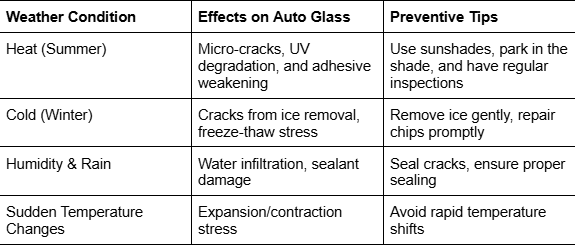
How to Protect Your Auto Glass Throughout the Year
- Routine Inspections: Regularly check for chips, cracks, or signs of damage.
- Gentle Ice Removal: Use a plastic scraper and avoid hot water or forceful scraping.
- Proper Parking: Shade your vehicle during hot months and use covered parking if possible.
- Timely Repairs: Address chips or cracks immediately to prevent them from worsening.
- Use Windshield Sun Covers: These can reduce heat buildup and UV exposure during summer.
Weather Plays a Significant Role in the Health of Your Auto Glass
Summertime heat and intense sunlight can cause thermal stress and UV damage, whereas winter’s freezing temperatures and ice removal can lead to cracks and stress fractures. Transitional seasons, such as spring and fall, bring their own challenges with fluctuating temperatures and increased moisture exposure.
By understanding these impacts and taking proactive steps, such as regular inspections, gentle ice removal, and timely repairs, you can extend the life of your windshield and ensure your vehicle remains safe and reliable on the road. Remember, treating your auto glass with care through each season not only saves you money on repairs but also keeps you safer behind the wheel.
Do You Have Windshield Damage in Austin, TX?
If you are in
Austin,
Round Rock, or
Jollyville, TX, and your vehicle has suffered some seasonal
auto glass damage,
contact us at Capitol City Glass. We’re a preferred partner with all major
insurance companies, and we’ve been serving this area of Central Texas for over a decade.
